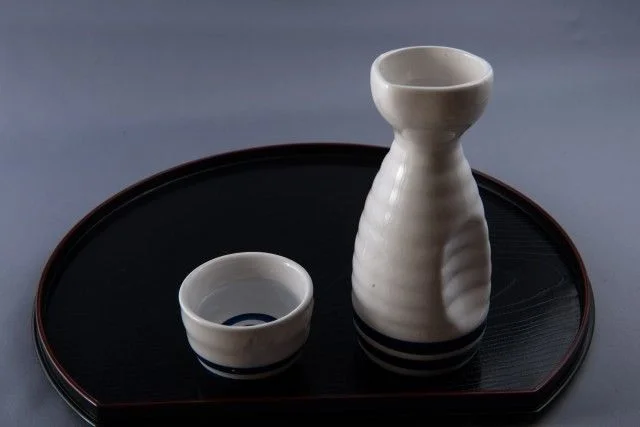What Is “Unami Sake” (Unamisake)?

When people refer to “unamisake”, they usually mean a type of sake that features a strong umami or savory flavor profile. The term “umami” (うま味) in Japanese means a pleasant savory taste — often described as meaty, brothy, or complex — and is considered the “fifth taste” beyond sweet, sour, salty, and bitter.
In sake, umami character arises from the presence of amino acids and breakdown products of proteins during fermentation. Some sake styles — particularly those made with less polished rice and traditional brewing methods — retain more of these amino compounds and thus display more pronounced savory depth.
So, “unamisake” is not a standard category in sake classification, but rather a descriptive label used by enthusiasts and menus to denote sake with noticeable savory richness.
What Influences Umami in Sake?
Several factors in sake brewing and ingredients contribute to how much umami a sake will show:
1. Degree of Rice Polishing (Seimaibuai)
Sake made with less-polished rice (i.e. higher grain remaining) tends to carry more proteins and other compounds that contribute to umami. Highly polished sake (like Daiginjo) may emphasize floral or fruity notes instead.
2. Brewing Methods (Kimoto, Yamahai, Bodaimoto)
Traditional methods such as Kimoto or Yamahai encourage slower, harsher lactic acid bacteria development and produce higher amino acid content. These methods often yield sake with deeper umami and earthier tones.
3. Fermentation & Yeast Selection
Longer fermentation, increased autolysis, or yeast strains that break down protein more can create more savory compounds.
4. Storage & Aging
Some sake aged in barrels, or exposed to wood, or stored under certain conditions can develop additional savory elements, mellowing and deepening flavor.
5. Use of Rice Layers and Koji
Because sake is made with rice and koji (mold enzyme culture), the interactions between rice proteins and koji enzymes matter greatly. Koji breaks down starches and proteins, generating sugars and amino acids, the latter being central to umami.
The combined effect of these factors determines whether a sake is considered bright, floral, fruity, or savory / umami-rich.
Characteristics & Tasting Notes of Umami Sake
When you taste or smell an umami-forward sake, here are qualities to expect:
-
Brothy / soy / dashi-like notes: Some sakes evoke flavors associated with miso, kelp dashi, or soy sauce.
-
Mushroom / earth tones: Subtle mushroom, forest floor, or aged rice aromas.
-
Round, rich mouthfeel: The body of the sake feels fuller, almost creamy, with depth.
-
Lingering savory finish: Rather than sharp or brisk, the finish stays on subtle savory edges.
-
Balanced sweetness / acidity / bitterness: While umami is front, good umami sake balances with other basic tastes — not overwhelmingly salty.
Menus sometimes list “Earthy and Unami Sake” (notably spelled “unami” as shorthand) noting it is refined, elegant with fruity notes and a clean yet slightly sweet finish.
Also, sake retailers classify sake by flavor categories like Savory & Umami to help enthusiasts find richer profiles.
Food Pairings: What to Drink “Unami Sake” With
Umami-rich sake pairs well with savory, umami-heavy dishes, creating great synergy. Some pairings to try:
-
Seafood (shellfish, scallops, uni, shrimp)
The glutamate in sake combines with nucleotides in shellfish to create a flavor synergy, making the experience more than just additive. -
Miso soup, aged cheese, mushrooms, soy-based dishes
These share the umami domain, so the sake amplifies the savory notes rather than clash. -
Grilled fish or meat
The savory base helps bring out the flavor in grilled proteins, especially those with sauce or glaze. -
Japanese cuisine (sushi, sashimi, yakitori, ramen)
Dishes already built on subtle umami foundations match beautifully. -
Lightly charred or caramelized vegetables
Vegetables like eggplant, mushrooms, or tomatoes with umami depth can pair interestingly.
Because umami enhances the savoriness of food, a well-matched pairing can elevate both drink and dish, creating a “one plus one equals more than two” effect.
How to Choose & Serve Umami-Rich Sake
If you want to try unami sake, here’s how to select and serve:
Choosing a Bottle
-
Look for labels that mention Junmai, Kimoto, Yamahai — these are more likely to deliver savory character rather than purely fruity.
-
Check for tasting notes or flavor descriptors like “earthy, rich, savory, soy, mushroom, dashi.”
-
Explore sake purveyors’ Savory / Umami sections.
-
Avoid highly polished Daiginjo if your intent is savory — it often leans floral and delicate.
Serving Temperature
-
Chilled (cool) — helps stabilize flavors but may soften savory depth.
-
Room temperature — brings a good balance for many umami sakes.
-
Warm / heated — some umami sakes respond beautifully when gently warmed (e.g. 40–45 °C), allowing savory notes to open up.
Test small changes; the character can shift with temperature.
Serving Vessel & Glassware
-
Use a neutral, clear sake glass (ochoko or a small wine glass) so aromas aren’t masked.
-
Small pour sizes allow you to taste imagination of changing notes.
Storage Tips
-
Store bottles upright in cool, dark place.
-
Consume sooner rather than later for fresh notes (especially for nama or unpasteurized sake).
-
Once opened, reseal and refrigerate.
Why Umami Matters in Sake Culture
Umami is a core concept in Japanese cooking and flavor — and in sake, expressing umami connects the drink to food culture, terroir, and style.
-
Sake is richer in amino acids than many other alcoholic drinks; it inherently carries stronger umami potential.
-
Umami-rich sake often bridges the gap between drink and dish: it can act as both a sip and a companion to food.
-
Recognizing umami helps sake enthusiasts move beyond superficial sweetness or fragrance — it opens up a more mature appreciation.
-
As menus and sake shops adopt umami / savory designations, more drinkers can explore sakes beyond “sweet” or “fruity” stereotypes.
Conclusion
Although “unamisake” isn’t a formal sake classification, it’s a useful term to describe sakes with pronounced umami / savory profile. These sakes tend to come from brewing methods like Kimoto, Yamahai, use less-polished rice, incorporate rich fermentation, and exhibit deep, brothy, complex flavors.
Umami sake pairs beautifully with savory and flavorful foods, especially in Japanese cuisine — the synergy between sake and shellfish is a great example. Selecting a bottle with descriptors of earth, soy, mushroom, or dashi, then experimenting with serving temperature, can let you explore this rich side of sake culture.




